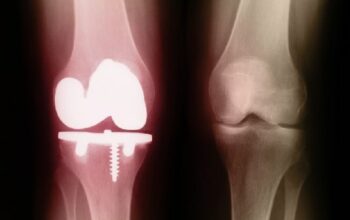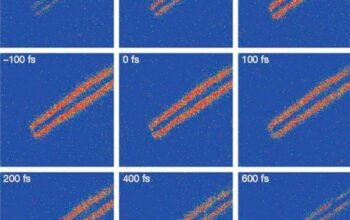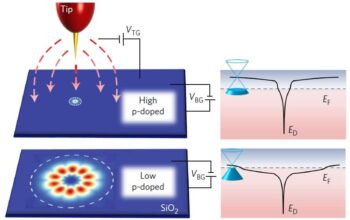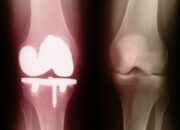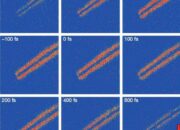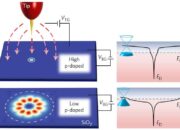In the realm of optical communication, a paradox emerges: defects, typically regarded as undesirable, can influence performance positively. This unexpected phenomenon invites a critical examination of how imperfections in materials can be harnessed to enhance efficiency in optical technologies. Thus, it becomes imperative to explore the intriguing interplay between defects and optical communication systems, shining light on underlying mechanisms, real-world implications, and future prospects.
Optical communication relies fundamentally on the transmission of information through light, predominantly using fiber optic cables. These cables boast advantages such as low loss, high bandwidth, and immunity to electromagnetic interference. Nevertheless, a paradoxical observation surfaces: certain defects within optical materials—be they crystalline, amorphous, or composite—can enhance the properties of optical devices. Such defects include vacancies, dislocations, and interstitial atoms, each contributing uniquely to the optical characteristics of the source material.
To comprehend how defects can confer advantages, one must delve into the physics governing these materials. Normally, crystalline structures exhibit a periodic arrangement of atoms, optimizing light transmission through predictable paths. However, when these structures are imperfect—characterized by deviations in atomic alignment—the resulting lattice disturbances can facilitate novel optical phenomena. For instance, vacancies create localized electronic states within the band gap, thereby enabling the material to absorb and emit light at specific wavelengths. This intrinsic property can be exploited to augment devices such as lasers and photodetectors.
The phenomenon of photoluminescence serves as a pertinent example. Specifically, defect-induced photoluminescence arises from the recombination of electrons and holes localized at defect sites, emitting photons as a result. This effect not only enhances the operational range of optical devices but also introduces new pathways for frequency modulation and data encoding. Numerous studies have demonstrated that engineered defects in semiconductor materials can effectively broaden the emission spectrum, producing tailored light conducive for diverse applications.
Furthermore, the study of defect engineering has garnered attention for its potential in quantum information processing. Quantum dots, for instance, are semiconductor particles that exhibit quantum mechanical properties. By meticulously introducing defects into the crystal lattice of quantum dots, researchers can manipulate photonic interactions, making them capable of single-photon emission—a critical requirement for quantum communication technologies. This capability underscores the emergent role of defective materials in paving the way for superior quantum networks, illustrating that flaws can function as harbingers of technological advancement.
Moreover, the interaction between defects and light propagation brings about intricate effects such as scattering and localization. In cases where polymers or glass fibers are utilized, the presence of defects can catalyze scattering phenomena, which while traditionally perceived as loss mechanisms, may, under specific circumstances, enhance the signal-to-noise ratio by redistributing the incident light across various modes. Such reconfiguration of light paths manifests as an opportunity to optimize the efficacy of transmission systems, especially in dense waveguide structures where space and coherence are paramount.
On a broader scale, one observes that some of the most lauded breakthroughs in optical communication technology stem from an embrace of imperfections. Photonic crystals, for instance, utilize periodic dielectric structures to control light flow. Within these systems, carefully introduced defects form ‘siteless’ zones where light can be localized, potentially leading to drastic improvements in light management. The apparent contradiction lies in the transcendence of traditional paradigms—whereby, rather than eliminating defects, their strategic incorporation allows devices to achieve unprecedented performance metrics.
Beyond mere optical characteristics, the economic dimension of defect inclusion also warrants consideration. In many cases, the cost-effective production of optoelectronic components hinges on the use of readily available materials, often flawed. By leveraging these imperfections, manufacturers can achieve competitive pricing without significant detriment to quality. This, in itself, is a compelling argument for the continued exploration of the advantageous role defects play in the optical domain—where the once-despised are rebranded as integral contributors to innovation.
Looking toward the future, the continued integration of defects within optical communication systems poses an exciting frontier. As applications expand—from autonomous vehicles relying on LiDAR to advanced data centers utilizing optical interconnects—the need for optimized, efficient communication pathways intensifies. Defect engineering could potentially pave the way for miniaturized devices, enhancing portability while maintaining robustness against environmental fluctuations.
Nevertheless, this exploration is not without its challenges. Ensuring predictable and controllable defect characteristics remains a crucial area of ongoing research. As the field continues to evolve, a comprehensive understanding of the relationship between defects and optical communication will be essential. Innovative techniques such as machine learning and advanced simulation methods hold the promise of refining our ability to tailor defect designs, thereby continuing to supplant traditional notions of perfection in material science.
In conclusion, the exploration of defects within optical communication systems signifies not merely a shift in material science but a paradigm redefinition. The embrace of flaws—once viewed through a lens of negativity—now offers a promising avenue towards solutions that enhance communication, optimize performance, and reduce costs. In a world increasingly reliant on rapid, efficient data transmission, the defects that shine may very well illuminate the path forward in the evolution of optical technologies.

